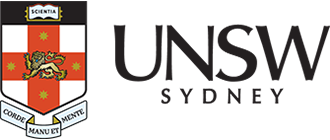Forty-three waterbird species
The fourth and final 2024-2025 Lower Balonne Flow-MER waterbird surveys were completed in February 2025. Nine of the 10 sites surveyed in the Narran Lake Nature Reserve were still wet. Only Salt Lake, a rainfed site, was dry. Eight sites exceeded 75 per cent inundation of the survey area.
The widespread inundation supported new vegetation growth and abundant waterbird activity, with 43 species recorded across the survey sites.
The waterbirds recorded included three species listed on the NSW Government’s threatened species list:
- a pair of black-necked storks nesting (Ephippiorhynchus asiaticus) – Endangered
- a pair of blue-billed ducks (Oxyura australis) – Vulnerable
- 18 freckled ducks (Stictonetta naevosa) – Vulnerable
Black-necked stork (Image: Pat Johnston)
The survey was conducted by the NSW Department of Climate Change, Energy, the Environment and Water (NSW DCCEEW) and supported by the NSW National Parks and Wildlife Service (NPWS).
Two members of the Dharriwaa Elders Group River Rangers also attended a morning survey, observing and getting to know the team.
There were hundreds (200 to over 500) of grey teal (Anas gracilis), Eurasian coot (Fulica atra), Australian pelicans (Pelecanus conspicillatus), great cormorants (Phalacrocorax carbo) and pied cormorants (Phalacrocorax varius) seen in the survey sites. Other species, where flocks of around 100 birds were observed, included pink-eared ducks (Malacorhynchus membranaceus), eastern great egrets (Ardea modesta), Australasian darters (Anhinga novaehollandiae), spoonbills and herons.
Darters and pied cormorants were also observed sitting on nests and with chicks, and little egrets (Egretta garzetta) were observed with breeding plumage.
The data from the completed Flow-MER survey trips, together with existing NPWS ground survey data, will allow our researchers to study changes in species composition at each site in relation to the season, water use, weather conditions and water in the landscape to inform Commonwealth environmental water decision-making.
... and a random Rakali
A Rakali near Condobolin, NSW (Image Warren Chad).
A surprise during the February waterbird survey was the observation of a Rakali (Hydromys chrysogaster).
Previously known as the Australian water rat, the name was phased out in the 1990s to distinguish it from the introduced rat species.
It was replaced with Rakali, from the language of the Ngarrindjeri people of the Lower Murray River and Coorong region of South Australia. Its name in the local Lower Balonne Gamilaraay language is gumaay.
This sighting was extremely rare as the animal requires habitats with year-round water. In contrast, Narran Lakes (Dharriwaa) is an ephemeral (or seasonal) wetland that is frequently dry.
The first and last official recorded sighting of a Rakali in the Narran Lakes Nature Reserve was in 1998.
